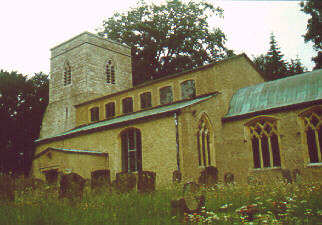Among other characteristics of [the Northamptonshire Bogie], was that of superior strength, a quality which he also holds in common with his German and Scandinavian brethren. It is to a being of this class that the village of Stowe, near Daventry, is said to derive its adjunct of ‘Nine-churches.’ In days of yore, say the villagers, a lord of the manor was desirous of raising a church in his native place, at that time known by the simple appellation of Stowe. A hill was chosen for the site, cunning workmen procured, and the foundation laid; but on the following morning, when the labour was to be resumed, no traces of the yesterday’s work were visible. Trenches stones, and tools had all vanished. After a long search they were discovered, some distance beyond, on the spot where the present church now stands. The lord, however, was stubborn, and was not to be so easily baffled. Nine times did he renew his attempt, and each time were they frustrated by the spirit, who I continued to remove in the night what the workmen had raised during the day. With great difficulty a man was induced to watch these midnight proceedings: and who does the reader imagine were the unseen opponents of the church builders? The tiny legions of Queen Mab, perhaps, as in the case of God’s Hill, in the Isle of Wight. But, alas for the poetry of our rustics, the watchman reported the aggressor as an object ‘summet bigger nor a hog’. After this the attempt was given up in despair, and the present church built on the site so marvellously selected. Sternberg, 139


